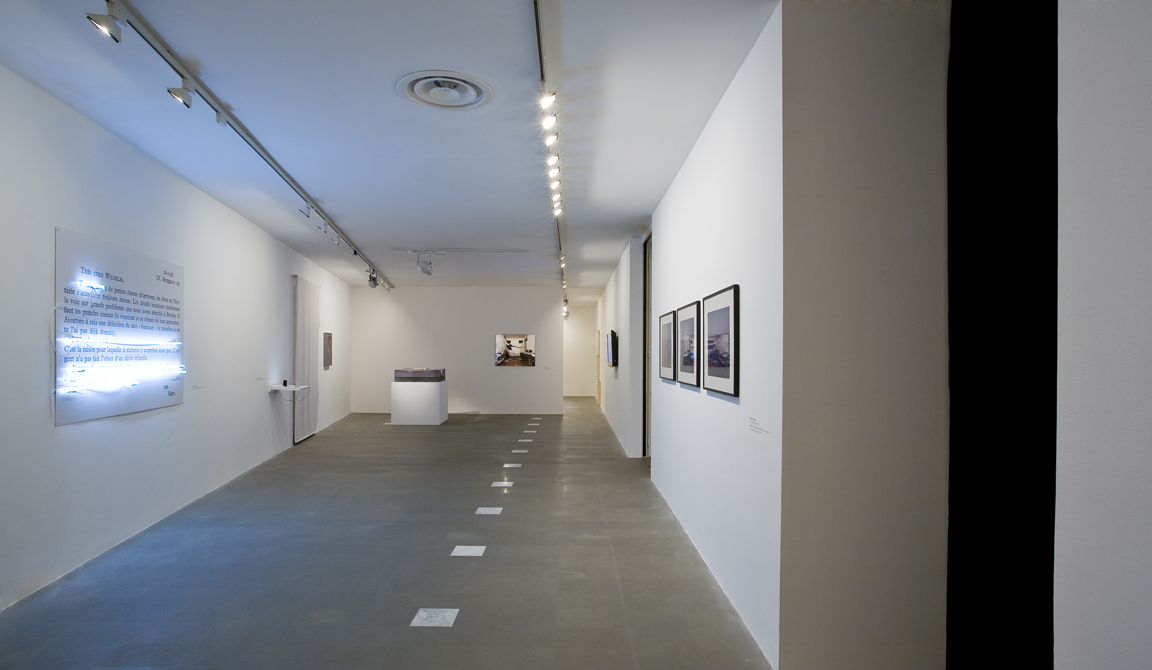The MAN in collaboration with the Frac (Regional Contemporary Art Fund of Corsica) proposes a new major exhibition: this time the attention is focused on the contemporary, with an exhibition that takes the form of an in-depth and selective journey through the Corsican collection that presents around forty works by international artists, four of which were entirely created in Sardinia and Corsica.
The FRAC collection, conceived on the basis of a project that combines the historical vision with the prospective one, passing through the idea of nature (inspired by that of the island) which has allowed all the developments, both announced and unexpected, appears today like this how its history created it and how all those who played a role in its becoming wanted it: a vital arborescence than a (partial) physical destruction[the] it didn’t make a dent. Its re-invention was realized as a reaction of its own organism, born from the gestures and intentions of the artists that constitute it, reaffirming the concept that works cannot disappear after their creation, but continue to grow.
The exhibition of the FRAC works at the MAN in Nuoro offers the collection a period of great visibility, and at the same time consolidates the artistic relations between Corsica and Sardinia and between two international museum institutions which carry out, each on their own territory, similar functions, giving following a collaborative project started in 1999[ii]. This partnership expresses much more than the desire or need to create artistic exchanges. It is, in fact, about sharing and making clear, starting from the geographical area that sees the two contiguous islands, what situations, history, will and interests reveal: apart from the individuality of each, which exists and is perceived as such from the outside and from others, the similarities of points of view and the same indelible experience of both living the condition of insularity stand out. The island is a concept that has a form, which becomes a sign. But the sign does not define the island, it does not totally contain it. It is, on the contrary, a symbol of its complexity, it traces the contours of the enigma by participating in which the islander recognizes himself and thus obtains a place in the world, aware of having not found an answer to the anguish of being.
For this reason, issues relating to territories, often very heartfelt and concrete, are not always crucial, even if they can have an infinite resonance when they become a tool for introducing other, more far-reaching ones. It is the effect produced by those works whose “proximity transports us to a place other than the one in which we usually stay”[iii] to put it in Heidegger’s words. This elsewhere, this different place is not something well defined: it is vast, unspeakable, different, but at the same time linked to our experiences and reflections (sometimes unexpressed). When explicit references to spaces, forms, precise facts meet, they are not isolated in a single reality, but open the particular to the universal: the idea of the exhibition arises from this, to which the insular context in which the the “world/earth” dualism develops conceptually and materially.
The exhibition World and Earth brings together works that are as many openings towards the outside: other geographical or mental regions, discovered, invented or composed landscapes, new perception of the world and space. The artists propose experiences to share, raise environmental issues. Far from clichés, they create places of debate, devices that raise awareness of realities and possible universes, actions and postures that reveal the links of art with society, history and culture.
Through a heavy, funny or poetic language, these artists, who do not provide lessons or models, awaken the critical sense from a dangerous slumber: in the dialogue that is established between them, and between them and the outside, the works produce a energy shared with the visitor.
Artists present in the exhibition: Martine Aballea (France), Agnès Accorsi (France), Denis Adams (United States), Saâdane Afif (France), Eleanor Antin (United States), Johanna Billing (Sweden), Leonardo Boscani (Italy), Daniel Buren (France) , Jean-Marc Bustamante (France), Jordi Colomer (Spain), Elie Cristiani (France), François Curlet (France), Dominique Degli Esposti (France), Anne Deleporte (France), Hakima El Djoudi (France), Simonetta Fadda ( Italy), Malachi Farrell (France), Alicia Framis (Spain), Liam Gillick (Great Britain), Dominique Gonzalez-Foerster (France), Dan Graham (United States), Fabrice Hyber (France), Claire-Jeanne Jezequel (France) , Valérie Jouve (France), Joseph Kosuth (United States), Ange Leccia (France), Pinuccia Marras (Italy), Antonio Muntadas (Spain), Marylène Negro (France), João Onofre (Spain), Gabriel Orozco (Mexico), June Bum Park (Korea), Gaël Peltier (France), Michelangelo Pistoletto (Italy), Wilfredo Prieto (Cuba), David Raffini (France), Navin Rawanchaikul (Thailand), Hugues Reip (France), Sigurdur Arni Sigurdsson (Iceland), Jana Sterbak (Canada/Czech Republic), Laurent Tixador and Abraham Poincheval (France), Joséphine Sassu (Italy), Philippe Thomas (France), Barthélemy Toguo (Cameroon), James Turrell (United States), Jacques Villegle (France), Jeff Wall (Canada), Stephen Willats (Great Britain).
Curated by Anne Alessandri, director of FRAC CORSICA
On 6 November 2001 a fire destroyed a FRAC warehouse in Corte, containing a large part of the works in the collection. The artists, together with the managers of the technical-scientific committee, worked to reconstitute the collection with the support of FRAC, which was added to the insurance indemnities.
[ii] 1999 is the date of the exhibition Atlas in Sassari, in which the FRAC participates with 14 Corsican artists.
[iii] Martin Heidegger, The origin of the artistic work t

